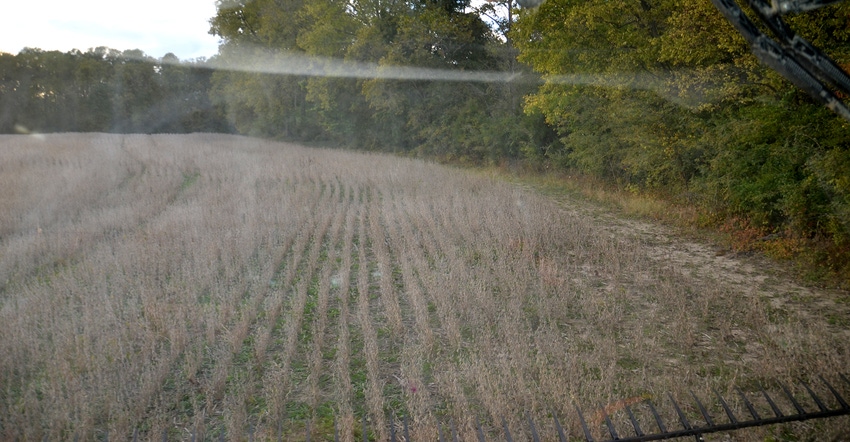
You didn’t really need a yield monitor to know that the boundary on one end of the Soybean Watch ’21 field was hard hit by its location next to a line of mature trees. In this field, there is a tree line running most of the way along two edges of the field.
Just looking through the window of the combine cab, it was obvious that soybean plants were shorter — much shorter. There was also less branching. But since the combine has a yield monitor, in this case there was no guessing on how much the tree line hurt yield. The field averaged 66 bushels per acre. The first pass of 45 feet along the trees topped out at 32 to 34 bushels per acre on the monitor. That’s half the yield — a 50% cut.
“We know we take a yield penalty on those first few rows near a border with a woods,” says Steve Gauck, a regional agronomy manager for Beck’s, sponsor of Soybean Watch ’21. “However, we may not always stop to realize how far into the field a tree line can affect yields, and how severely it can cut production.”
Wildlife damage increases along field edges, but most of the damage this year was likely due to competition for moisture, Gauck says. Late July and most of August, including five crucial weeks, was bone-dry.
Dollars and cents
A 45-foot swath across 1,000 feet equals just over 1 acre. Gross income on that first pass, assuming $12-per-bushel soybeans, comes out to roughly $400. That’s not going to break even on variable costs, let alone fixed costs, if you count land rent or land ownership cost as a variable, direct cost.
Compare that to almost $800 gross income for the whole field. That’s a $400 write-off, and likely a net loss, for the land near the trees. This is not the first time Indiana Prairie Farmer projects have documented large financial penalties for planting near trees. Corn yields were significantly lower for the first 12 rows harvested near a woods in the Corn Watch 2020 field.
Can you afford to leave up to an acre of land idle? The better question might be: Can you afford to farm it when odds suggest you’re going to take a huge yield hit?
The Natural Resources Conservation Service offers the field border practice through the continuous Conservation Reserve Program. Agency spokespersons say it includes cash rent based on soil types for acreage left out of production near field borders, plus cost-share for establishing a suitable cover on field borders. Areas along tree lines typically qualify as good candidates for field borders.
You can inquire about details and signup deadlines at your NRCS, Farm Service Agency or county soil and water conservation district office.
About the Author(s)
You May Also Like




